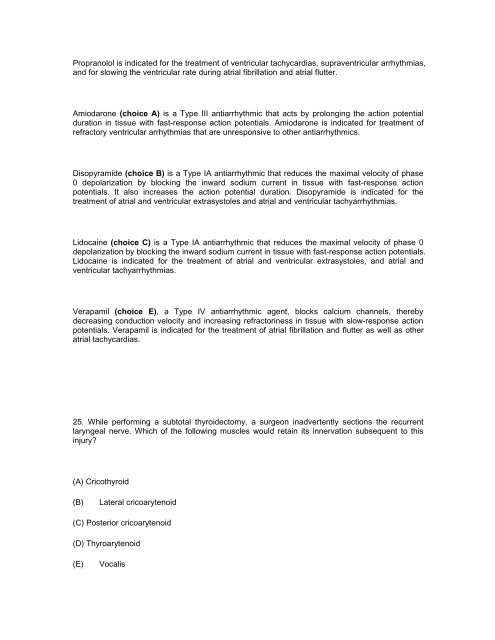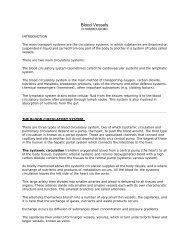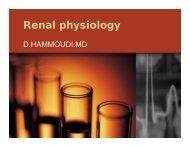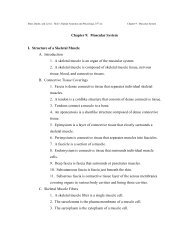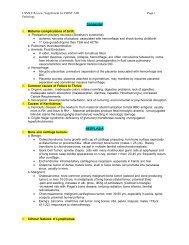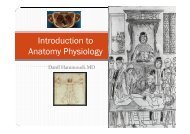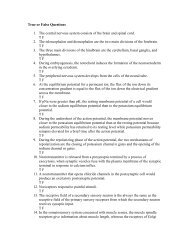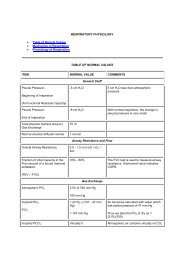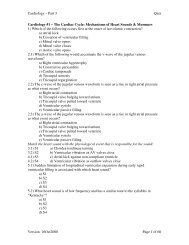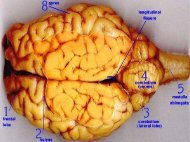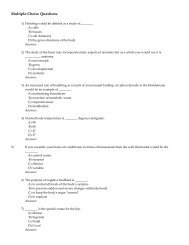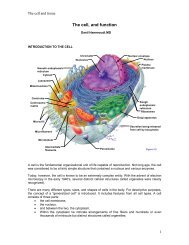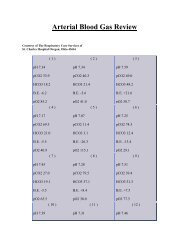L:\usmle review 7 - Sinoe medical homepage.
L:\usmle review 7 - Sinoe medical homepage.
L:\usmle review 7 - Sinoe medical homepage.
Create successful ePaper yourself
Turn your PDF publications into a flip-book with our unique Google optimized e-Paper software.
Propranolol is indicated for the treatment of ventricular tachycardias, supraventricular arrhythmias,<br />
and for slowing the ventricular rate during atrial fibrillation and atrial flutter.<br />
Amiodarone (choice A) is a Type III antiarrhythmic that acts by prolonging the action potential<br />
duration in tissue with fast-response action potentials. Amiodarone is indicated for treatment of<br />
refractory ventricular arrhythmias that are unresponsive to other antiarrhythmics.<br />
Disopyramide (choice B) is a Type IA antiarrhythmic that reduces the maximal velocity of phase<br />
0 depolarization by blocking the inward sodium current in tissue with fast-response action<br />
potentials. It also increases the action potential duration. Disopyramide is indicated for the<br />
treatment of atrial and ventricular extrasystoles and atrial and ventricular tachyarrhythmias.<br />
Lidocaine (choice C) is a Type IA antiarrhythmic that reduces the maximal velocity of phase 0<br />
depolarization by blocking the inward sodium current in tissue with fast-response action potentials.<br />
Lidocaine is indicated for the treatment of atrial and ventricular extrasystoles, and atrial and<br />
ventricular tachyarrhythmias.<br />
Verapamil (choice E), a Type IV antiarrhythmic agent, blocks calcium channels, thereby<br />
decreasing conduction velocity and increasing refractoriness in tissue with slow-response action<br />
potentials. Verapamil is indicated for the treatment of atrial fibrillation and flutter as well as other<br />
atrial tachycardias.<br />
25. While performing a subtotal thyroidectomy, a surgeon inadvertently sections the recurrent<br />
laryngeal nerve. Which of the following muscles would retain its innervation subsequent to this<br />
injury<br />
(A) Cricothyroid<br />
(B)<br />
Lateral cricoarytenoid<br />
(C) Posterior cricoarytenoid<br />
(D) Thyroarytenoid<br />
(E)<br />
Vocalis


